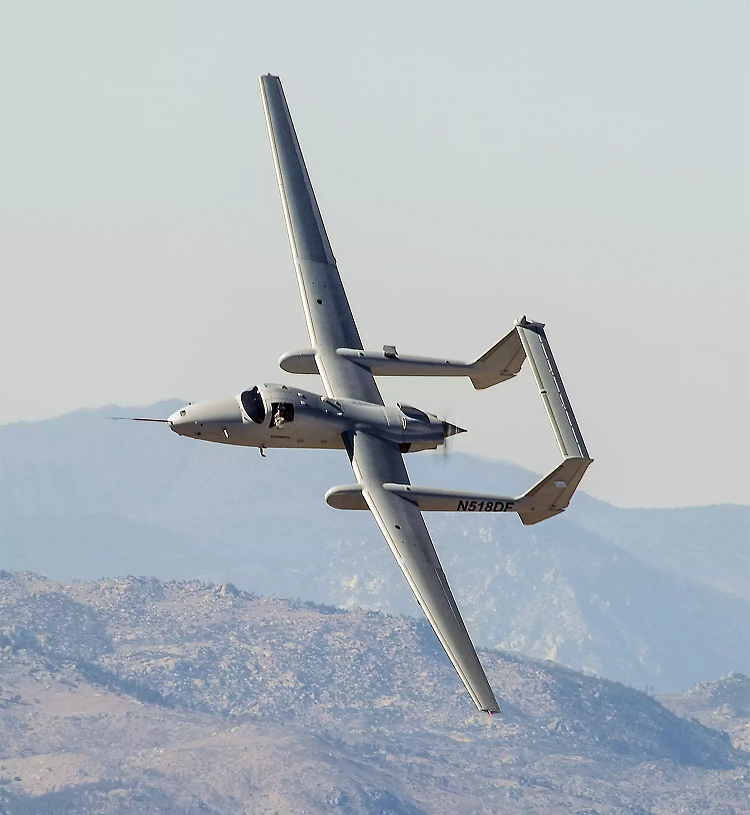
(NORTHROP GRUMMAN)
Northrop Grumman has revealed an enhanced version of its Firebird optionally-piloted ISR aircraft.
This new version was revealed to selected US defence media on December 6 ahead of an expected marketing campaign to potential customers in 2019. It was developed from a similarly-configured but smaller optionally-piloted aircraft known as the Model 355 developed by Northrop Grumman subsidiary, Scaled Composites which first flew in February 2010 and was first revealed in 2011.

The initial Scaled Composites Model 355 Firebird demonstrator. (NORTHROP GRUMMAN)
Firebird features a 79.2ft wingspan with two hardpoints on each wing, twin booms which house the undercarriage and sensors, a large fuselage payload bay, a two-crew cockpit with side-by-side seating, and a Lycoming T540 piston engine driving a five-bladed pusher propeller.
The cockpit section can be removed and replaced with a SATCOM antenna and dome in just four hours, and the ground control segment closely resembles that of the cockpit.
The earlier Scaled demonstrator had a 72ft wingspan and reportedly had a 40-hour endurance in its unmanned configurations. It was successfully demonstrated at a number of exercises in 2011/12 and was subsequently approved for limited production for an unnamed customer.

(NORTHROP GRUMMAN)
The company says the Firebird’s open-architecture backbone allows it to carry dozens of different sensors and as many as four sensor payloads simultaneously. “We’re not designing this product for a specific competition,” a Northrop Grumman spokesman told Aviation Week. “We’re designing this product to be very, very flexible so it can meet a broad range of customer needs with minimal to no redesign of the product, because the flexibility is already there.
“This is going to do missions that are done by manned platforms today, missions that are done by unmanned platforms today and missions that are not currently able to execute because there is nothing with the right capability at the right price point.”
Potential payloads include electro-optical, infra-red (EO/IR) sensors, side-looking or mapping radars, signals intelligence (SIGINT) packages, communications relays such as Northrop Grumman’s own battlefield airborne communications node (BACN), electronic warfare packages, or targeting lasers.
The advantage of being optionally-piloted means the Firebird can operate in or transit through controlled airspace for exercises or deployment ferries, instead of having to be broken down and carried in a large transport aircraft like systems such as the GA-ASI MQ-9 Reaper.

The Firebird in its piloted configuration. (NORTHROP GRUMMAN)
